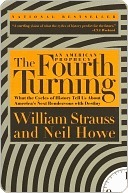More on this book
Community
Kindle Notes & Highlights
Read between
October 17, 2019 - February 11, 2020
Public debts soar, the middle class shrinks, welfare dependencies deepen, and cultural arguments worsen by the year.
We now have the highest incarceration rate and the lowest eligible-voter participation rate of any major democracy. Statistics inform us that many adverse trends (crime, divorce, abortion, scholastic aptitudes) may have bottomed out, but we're not reassured.
We perceive our civic challenge as some vast, insoluble Rubik's Cube. Behind each problem lies another problem that must be solved first, and behind that lies yet another, and another, ad infinitum. To fix crime we have to fix the family, but before we do that we have to fix welfare, and that means fixing our budget, and that means fixing our civic spirit, but we can't do that without fixing moral standards, and that means fixing schools and churches, and that means fixing the inner cities, and that's impossible unless we fix crime.
The reward of the historian is to locate patterns that recur over time and to discover the natural rhythms of social experience.
The First Turning is a High, an upbeat era of strengthening institutions and weakening individualism, when a new civic order implants and the old values regime decays. The Second Turning is an Awakening, a passionate era of spiritual upheaval, when the civic order comes under attack from a new values regime. The Third Turning is an Unraveling, a downcast era of strengthening individualism and weakening institutions, when the old civic order decays and the new values regime implants. The Fourth Turning is a Crisis, a decisive era of secular upheaval, when the values regime propels the
...more
In the current saeculum, the First Turning was the American High of the Truman, Eisenhower, and Kennedy presidencies.
The Second Turning was the Consciousness Revolution, stretching from the campus revolts of the mid-1960s to the tax revolts of the early 1980s. Before John Kennedy was assassinated, no one predicted that America was about to enter an era of personal liberation and cross a cultural divide that would separate anything thought or said after from anything thought or said before. But that's what happened. The Third Turning has been the Culture Wars, an era that began with Reagan's mid-1980s Morning in America and is due to expire around the middle of the Oh-Oh decade, eight or ten years from now.
...more
Sometime before the year 2025, America will pass through a great gate in history, commensurate with the American Revolution, Civil War, and twin emergencies of the Great Depression and World War II.
Today's Third Turning problems—that Rubik's Cube of crime, race, money, family, culture, and ethics —will snap into a Fourth Turning solution.
By the 2020s, America could become a society that is good, by today's standards, and also one that works.
“There is a mysterious cycle in human events,” President Franklin Roosevelt observed in the depths of the Great Depression. “To some generations much is given. Of other generations much is expected. This generation has a rendezvous with destiny.”
More recently, the West began using technology to flatten the very physical evidence of natural cycles. With artificial light, we believe we defeat the sleep-wake cycle; with climate control, the seasonal cycle; with refrigeration, the agricultural cycle; and with high-tech medicine, the rest-recovery cycle.
Before, when cyclical time reigned, people valued patience, ritual, the relatedness of parts to the whole, and the healing power of time-within-nature. Today, we value haste, iconoclasm, the disintegration of the whole into parts, and the power of time-outside-nature.
Yet the great weakness of linear time is that it obliterates time's recurrence and thus cuts people off from the eternal—whether in nature, in each other, or in ourselves. When we deem
our social destiny entirely self-directed and our personal lives self-made, we lose any sense of participating in a collective myth larger than ourselves. We cannot ritually join with those who come before or after us. Situating us at some intermediate moment eons away from both the beginning and the end of history, linear time leaves us alone, restless, afraid to stand still lest we discover something horrible about ourselves. Most Americans would agree with Mary McCarthy that “The happy ending is our national belief”—but few of us have any idea what we would do if we ever got there.
The more we persist in believing time to be linear, the more we fear that the path to the future might now be linear downwards.
Arthur M. Schlesinger Jr. writes: A true cycle … is self-generating. It cannot be determined, short of catastrophe, by external events. War, depressions, inflations, may heighten or complicate moods, but the cycle itself rolls on, self-contained, self-sufficient and autonomous…. The roots of this cyclical self-sufficiency lie deep in the natural life of humanity. There is a cyclical pattern in organic nature—in the tides, in the seasons, in night and day, in the systole and diastole of the human heart.
Today, it loosely goes by the name of siecle, or “century.”
We memorialize public events (Pearl Harbor, the Kennedy and King assassinations, the Challenger explosion) by remembering exactly what we were doing at the time. As we grow older, we realize that the sum total of such events has in many ways shaped who we are.
Exactly how these major events shaped us had much to do with how old we were when they happened.


